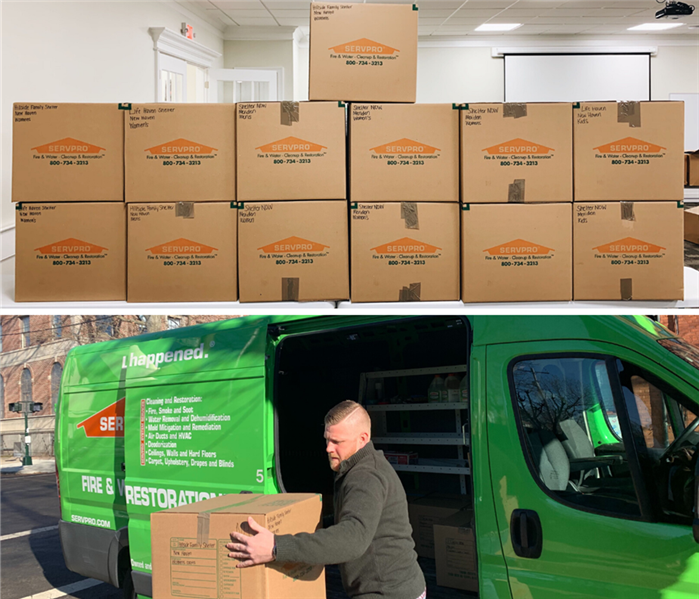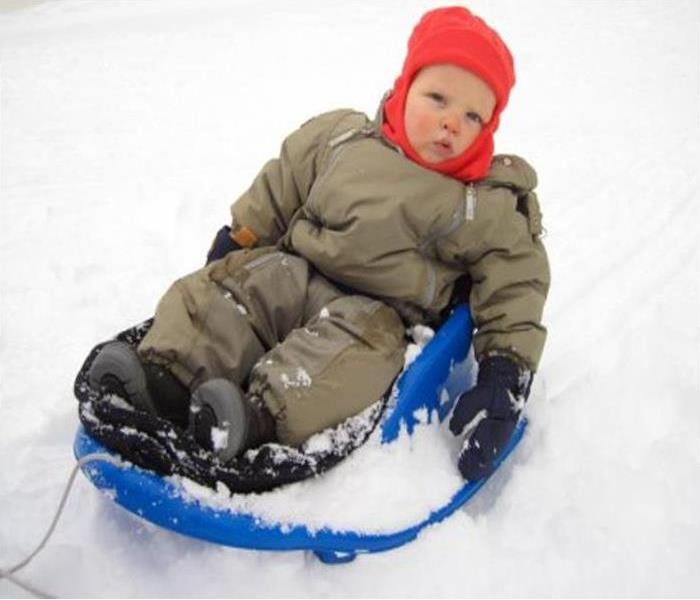We want you to have fun, but we also are here to help you prevent disaster, so we did some research to help you make sure you and the kids are safe this winter ...
DID YOU KNOW that sledding head injuries from collisions commonly send people to ERs?
Research shows 20,000+ ER visits per year were a direct result of sledding injuries in patients under 19, and severe cases can lead to paralysis, disability, or even death!
1.) Check the weather
DID YOU KNOW that you can get frostbite or hypothermia in only 10-15 minutes and that there are approximately 125,000 frostbite and hypothermia hospitalization cases in the US per year, including over 1,300 deaths?!
Human Heat Transfer Theory - Air molecules in contact with skin absorb heat from your body. Wind and water (including wet clothing from melted snow and sweat) make this occur faster causing even greater heat loss. Being cold and wet puts people at risk, at any outside temperature below normal body temperature, because the human body strives to maintain a steady temperature of 98.6ºF. Anything below this causes stress on the system.
When faced with heat loss, vital organs (heart, lungs and brain) will begin to shut down blood flow to the extremities such as the hands, arms, feet, legs, nose, and ears to preserve precious heat for vital organs to maintain life. This is why they need to be waterproof and warm coverage!
When fingers are numb hypothermia HAS ALREADY SET IN to the main core of the body in the beginning stages of death!!!!
Proper operating temperature (98.6ºF) for internal organs is critical because the body is a factory and all the reactions that take place must happen under precise conditions so it does not slow down or stop.
Core body temperature risks:
Mild hypothermia = 90ºF-95ºF
Moderate hypothermia = 82ºF-90ºF
Severe hypothermia = -82ºF
(Centers for Disease Control and Prevention [CDC] 2006; O’Connell 2004)
2.) Know The Wind Chill
Wind gusts exceeded 70mph in at least 5 states from Winter Storm Jonas this weekend. Calm wind chill ranges around 3-5 mph. For the next 10 days, the wind chill is calculated to be 4-13mph.
This means that when it is -5ºF outside with an average wind chill, it is actually -24.0 for your body instead of +98.6!!!
An average winter day in the northeast is around 37ºF with the average wind chill of 8mph this week, it is 32ºF to your body and you are outside sweating sledding bundled for cold weather, getting wet, in the wind, and the cold, for over 30 minutes, MORE THAN ENOUGH TIME FOR FROSTBITE AND/OR HYPOTHERMIA TO SET IN, under normal fun conditions, so be careful!
Frostbite can lead to amputation and frostbite can happen in as little as 10 minutes. At 40ºF with a wind chill of only 5, frostbite can occur within 30 minutes.
*(Read the symptoms and solutions for frostbite and hypothermia at the end of this article.)*
3.) Use the Right Kind of Sled
Pick a sled that has runners, brakes, and a steering mechanism otherwise they can be nearly impossible to steer and stop, and they can propel children into the air willy nilly.
Softer and thinner items like plastic sheets and cardboard boxes can easily be pierced by objects on the ground and are difficult to steer and stop.
Sledding safety is all about being in control of the sled so it stays fun!
4.) Dress For Extended Cold Weather Exposure
Dress for Cold Temperatures
Since sledding involves playing in the snow outdoors during wintertime, chances are it's going to be cold. Make sure everyone wears proper clothing to stay warm and safe.
Kids should wear warm hats, gloves, snow pants, waterproof winter jacket, waterproof snow boots — and change into something dry if their clothes get wet.Fleece layers under waterproof outer layers are the best to maintain warmth and outer layer dryness.Scarves can get caught in a sled with a risk of strangulation, so no scarf.Kids should wear winter sports or bike helmets, particularly if they're under 12.Protect your head with a balaclava and I don’t mean baklava the dessert! Always keep ears covered! Noses should really be covered for sledding in the cold for extended periods of time too.Keep a change of clothing for each child in case they get wet, and for after the sledding to get out of the cold wetness replacing sweaty under layers with dry clothes.5.) Choose the Right Sledding Hill
· Select a hill that is not too steep, has a long, flat area at the bottom for stopping, does not end near street, parking lot, pond, trees, fences, or other hazards.
· Make sure it does not have tree stumps, branches, rocks, obstacles, jumps, bumps, poles, or trees that sleds could get caught on or hit their head on.
· Avoid sledding on a hill with hard-packed snow or ice. If you fall off the sled, the ice will make for a harder landing and increase your likelihood of injury.
SUMMARY -
Here is the announcement for just before the fun begins -
“Sledding Safety Rules:
1. Kids under 5 sled with an adult.
2. 1 kid on 1 sled at 1 time.
3. Arms and legs ALWAYS within sled.
4. Walk up the side of the hill to leave the middle track open for fun.
5. No pushing, pulling, jumps, or collisions!
6. Never sled head-first!
7. No tummy, backward, or standing for sledding.
8. In case of an emergency, roll off the sled before collision. (demonstrate avoiding hitting a tree stump and practice for a fun practice lesson)
9. Wear your helmet to protect your noggin from brain boo boos.
10. Don’t get hurt and have fun!”
Considering the Polar Plunge? Consult a doctor first. The enormous shock of these types of activities puts a strain on the heart. Cold shock will have you gasping for air. Blood flow will divert to your organs. You may become paralyzed or weak. Blood pressure increases due to constricted blood vessels, causing greater risk of stroke.
ASIDES NOTES FOR MORE INFORMATION:
Frostbite and Hypothermia Symptoms and Solutions
Frostbite and Hypothermia are from exposure to low temperatures, wind or moisture.
Shivering is one of the first signs of hypothermia and it is beneficial for keeping the body warm. But as hypothermia progresses, shivering gives way to drowsiness or exhaustion, confusion, shallow breathing, irregular heartbeat, slurred speech, loss of coordination and, eventually, unconsciousness, even death.
So what should you do if you encounter someone suffering from hypothermia?
· Move the victim inside and remove any wet clothing
· Call for medical attention
· Add blankets, pillows, towels or newspapers beneath and around the victim
· Cover the victim's head
· Handle the victim gently to avoid cardiac arrest
· Keep the victim in a horizontal position
· If necessary, give CPR (click here for the American Red Cross CT and NJ Adult First Aid/CPR/AED courses)
Frostbitten skin looks white, waxy or grayish-yellow, is cold and numb. Frostnip is a superficial cooling of tissues without cellular destruction.Deep frostbite means that all layers of skin are affected, skin is numb, blisters (Chilblains) may form and eventually skin tissue dies and turns black. Dead skin spreads so amputation is necessary for affected areas. The faster tissue is thawed, the less tissue damage occurs. So, follow these instructions fast!
If re-warmed tissue ends up refreezing, more damage will be done. Ice crystals that have formed in the tissue can further damage. Rubbing, massaging, shaking, or applying physical force to frostbitten tissues in an attempt to re-warm them can be harmful.
If you suspect frostbite:
· Get indoors immediately.
· Seek medical attention.
· Remove constrictive clothing and jewelry that could impair circulation.
· Place dry, sterile gauze between toes and fingers to absorb moisture and keep them from sticking together.
· Splint areas that may move if thawing then refreezing is likely.
· Elevate the affected area to reduce pain and swelling.
· For superficial frostbite, you may also place the affected area in water that is 100 to 105 degrees until the tissue softens.
· Get medical attention for frostbite and hypothermia as soon as possible.
______________________________________
Sources for information mixed into this article:
http://kidshealth.org/parent/firstaid_safe/outdoor/safety_sledding.html ; Michael Gleiber MD at http://www.huffingtonpost.com/michael-a-gleiber-md/snow-sledding-tips-to-avo_b_6272982.html ;
http://www.nsc.org/learn/safety-knowledge/Pages/news-and-resources-frostbite-and-hypothermia.aspx ;
http://timberlinetrails.net/ClimbingHypothermia.html ; http://www.nationalhomeless.org/publications/winter_weather/report.html ;
http://consumer.healthday.com/environmental-health-information-12/environment-health-news-233/more-americans-dying-from-hypothermia-cdc-says-696679.html ; http://www.weather.com/storms/winter/news/winter-storm-jonas-high-winds-coastal-flood-threats ;
http://www.nws.noaa.gov/om/winter/windchill.shtml ; https://en.wikipedia.org/wiki/Frostbite ; Marx, John (2010). Rosen's emergency medicine: concepts and clinical practice (7th ed.). Philadelphia, PA: Mosby/Elsevier. p. 1862. ISBN 978-0-323-05472-0. ; Mistovich, Joseph; Haffen, Brent; Karren, Keith (2004). Prehospital Emergency Care. Upsaddle River, NJ: Pearson Education. p. 506. ISBN 0-13-049288-4. ; http://dragonflyeye.net/datagram/number-reported-cases-frostbite-us/#.VqZW1VKkBmo



 24/7 Emergency Service
24/7 Emergency Service

